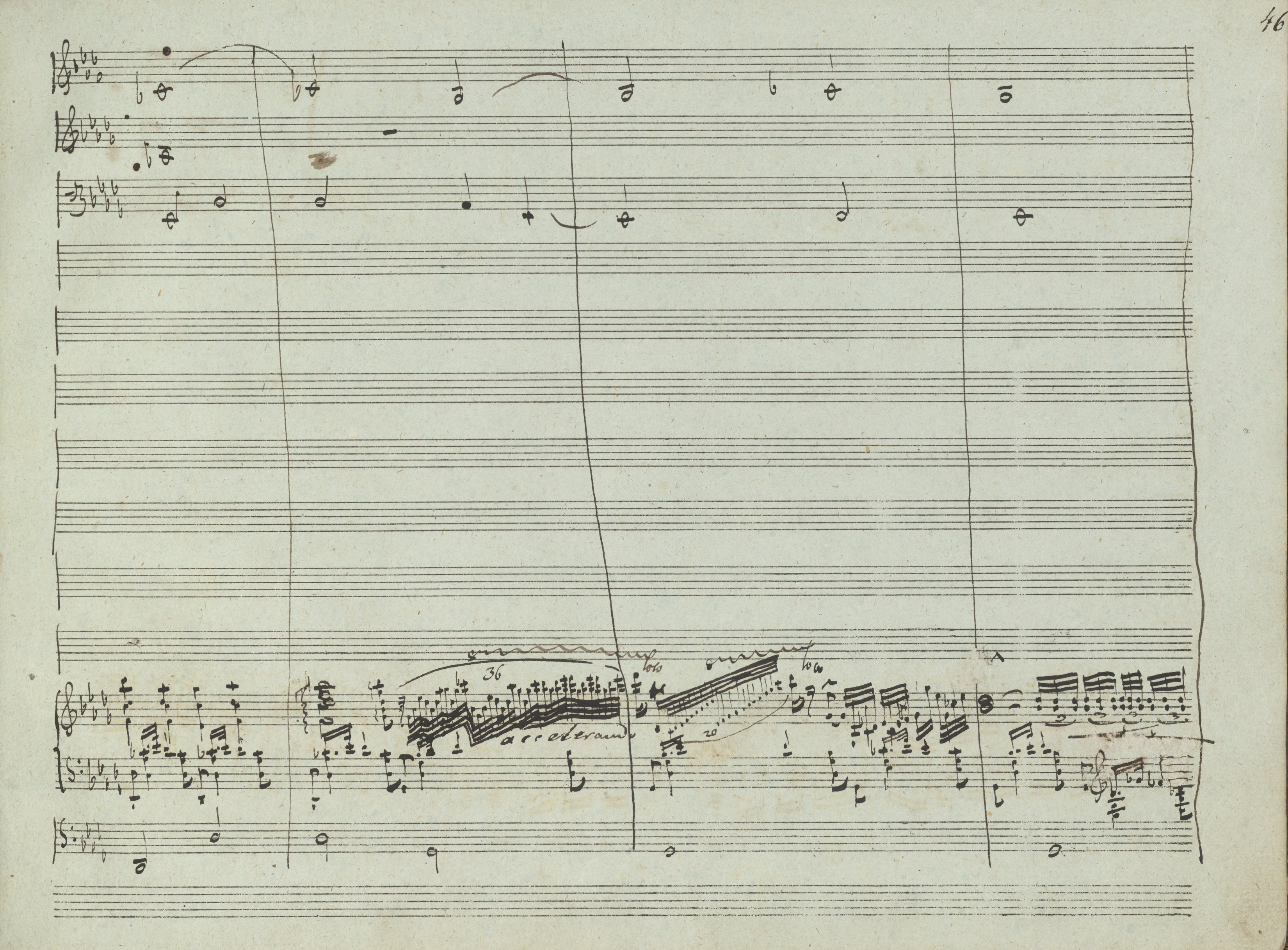Op. 2, Variations in B♭ major
Op. 10, 12 Etudes
Op. 11, Concerto in E minor
Op. 21, Concerto in F minor
Op. 22, Polonaise in E♭ major
Op. 24, 4 Mazurkas
Op. 25, 12 Etudes
Op. 26, 2 Polonaises
Op. 27, 2 Nocturnes
Op. 28, 24 Preludes
Op. 30, 4 Mazurkas
Op. 35, Sonata in B♭ minor
Op. 50, 3 Mazurkas
Op. 63, 3 Mazurkas
Op. 64, 3 Waltzes
(Op. 4), Sonata in C minor




Op. 2, Variations, complete
Strictly speaking, the R.H. figuration, in which 12 notes fall on one quaver, should be written in hemidemisemiquavers. However, in the main text we keep the version of the sources, since Chopin would write down irregular groups of notes encompassing a dozen or so notes in this way, hence in twice as long rhythmic values, also in other pieces, cf., e.g. the Prelude in D , Op. 28 No. 15, bar 4.
, Op. 28 No. 15, bar 4.
Compare the passage in the sources »
category imprint: Interpretations within context; Source & stylistic information
notation: Rhythm

